
Lisa Grossman is the astronomy writer for Science News. Previously she was a news editor at New Scientist, where she ran the physical sciences section of the magazine for three years. Before that, she spent three years at New Scientist as a reporter, covering space, physics and astronomy. She has a degree in astronomy from Cornell University and a graduate certificate in science writing from UC Santa Cruz. Lisa was a finalist for the AGU David Perlman Award for Excellence in Science Journalism, and received the Institute of Physics/Science and Technology Facilities Council physics writing award and the AAS Solar Physics Division Popular Writing Award. She interned at Science News in 2009-2010.

Trustworthy journalism comes at a price.
Scientists and journalists share a core belief in questioning, observing and verifying to reach the truth. Science News reports on crucial research and discovery across science disciplines. We need your financial support to make it happen – every contribution makes a difference.
All Stories by Lisa Grossman
-
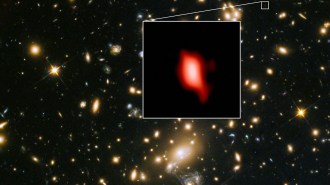 Astronomy
AstronomyThe most distant rotating galaxy hails from 13.3 billion years ago
Astronomers have spotted a rotating galaxy whose light comes from just 500 million years after the Big Bang.
-
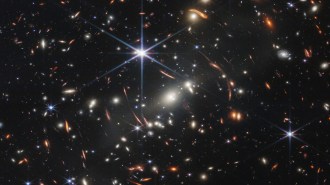 Astronomy
AstronomyHere are the James Webb Space Telescope’s stunning first pictures
President Biden revealed the NASA telescope's image of ancient galaxies whose light has been traveling 13 billion years to reach us.
-
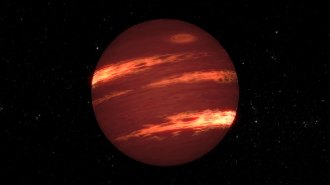 Astronomy
AstronomySand clouds are common in atmospheres of brown dwarfs
Dozens of newly examined brown dwarfs have clouds of silicates, confirming an old theory and revealing how these failed stars live.
-
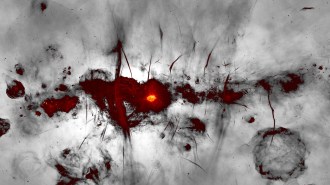 Space
SpaceThe heart of the Milky Way looks like contemporary art in this new radio image
The MeerKAT telescope array in South Africa provided this image of radio emissions from the center of our galaxy using data taken over three years.
-
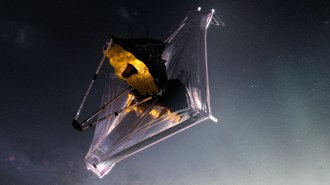 Astronomy
AstronomyThe James Webb Space Telescope has reached its new home at last
The most powerful telescope ever launched still has a long to-do list before it can start doing science.
-
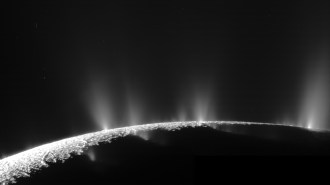 Planetary Science
Planetary ScienceEnceladus’ plumes might not come from an underground ocean
The celebrated plumes of Saturn’s moon Enceladus could come from pockets of watery mush in the moon’s icy shell, simulations suggest.
-
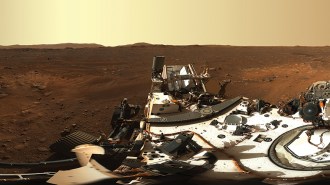 Space
SpaceSpacecraft in 2021 set their sights on Mars, asteroids and beyond
This year, a bevy of new missions got under way on Mars and spacecraft prepared to visit asteroids.
-
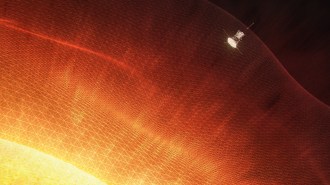 Astronomy
AstronomyThe Parker Solar Probe is the first spacecraft to visit the sun’s atmosphere
NASA’s Parker Solar Probe crossed a boundary between the sun’s atmosphere and interplanetary space that has been predicted for decades but never observed.
-
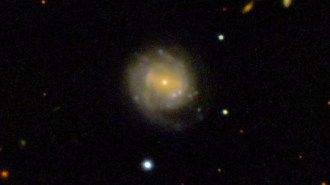 Astronomy
AstronomyThe cosmic ‘Cow’ may have produced a new neutron star or black hole
A bright, mysterious blast of extragalactic light appears to have spawned a small, compact object.
-
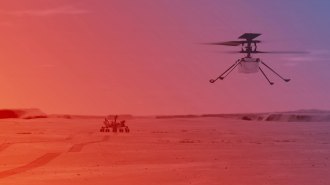 Planetary Science
Planetary ScienceIngenuity is still flying on Mars. Here’s what the helicopter is up to
NASA’s Ingenuity craft was originally planned to operate only 30 Martian days.
-
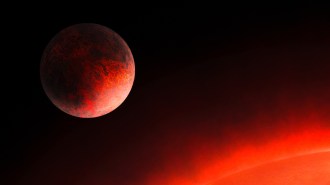 Planetary Science
Planetary ScienceThis tiny, sizzling exoplanet could be made of molten iron
A newly discovered exoplanet that whips around its star in less than eight hours is smaller than Earth, as dense as iron and hot enough to melt.
-
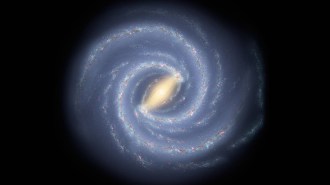 Astronomy
AstronomyAstronomers have found the Milky Way’s first known ‘feather’
Named for the glacier that feeds India’s longest river, the Gangotri wave spans up to 13,000 light-years and bridges two of our galaxy’s spiral arms.